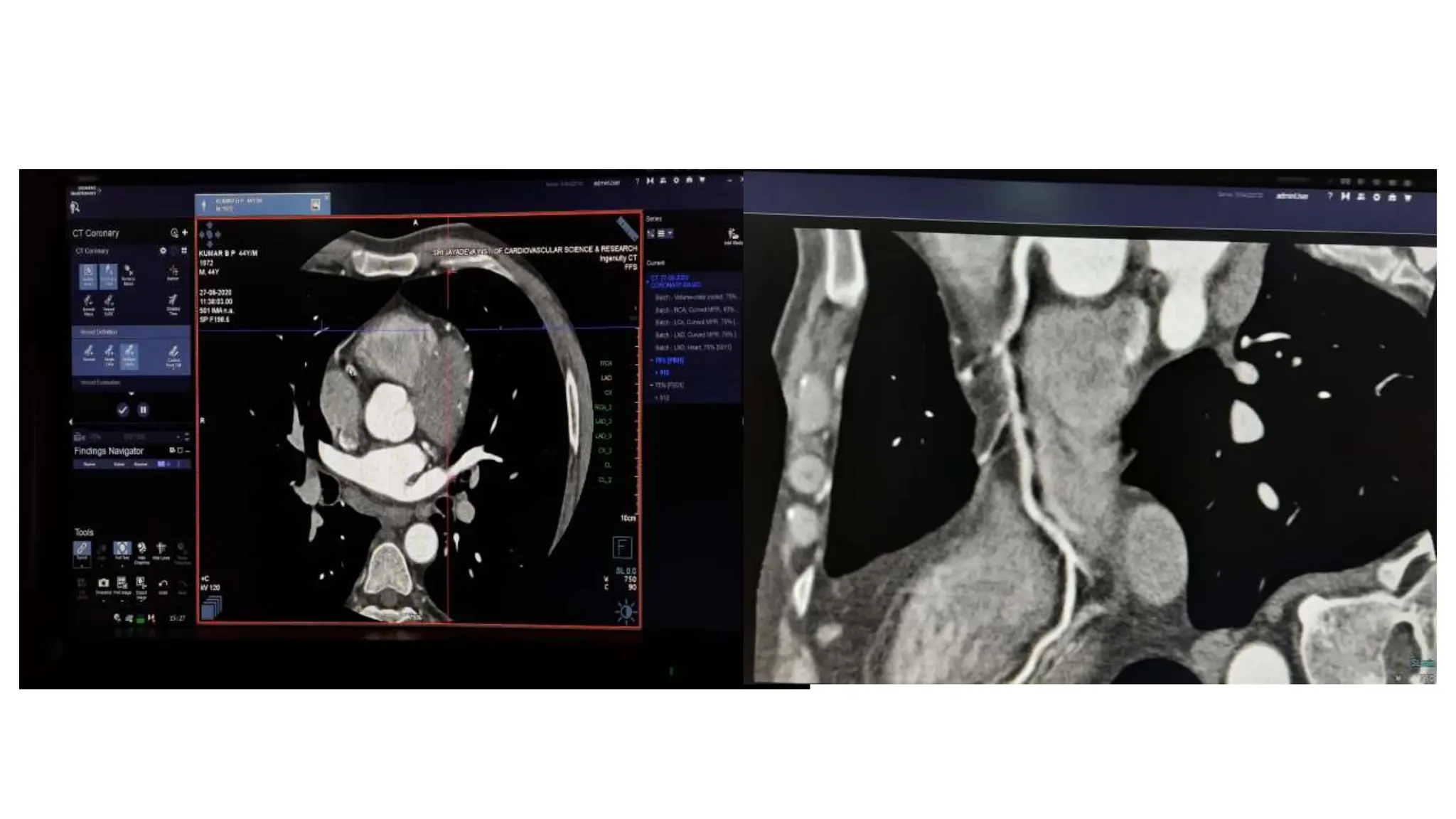CT coronary angiography can provide detailed images of the coronary arteries. It has high temporal and spatial resolution allowing visualization of small coronary arteries. The technique uses ECG gating and retrospective reconstruction to achieve motion-free images. Various pathologies like stenosis, anomalies, plaques and bypass grafts can be evaluated. Image quality can be affected by artifacts from calcium, stents or irregular heart rates.
























































![Vulnerable plaques
STABLE PLAQUES UNSTABLE/VULNERABLE
PLAQUES
• Large
calcifications
• Fibrotic tissue
and
• Smaller lipid
pools.
• Spotty calcifications
• Large-lipid pool (necrotic
core), which is covered by a
thin fibrous cap [thin-cap
fibroatheroma (TCFA)].](https://image.slidesharecdn.com/18-09-2020ctcoronaryangiogramdr-231217104158-17d23e65/75/18-09-2020-CT-CORONARY-ANGIOGRAM-Dr-Sowmya-Dr-BGJ-pptx-pptx-57-2048.jpg)

























